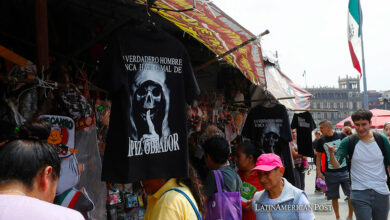In the complex world of economic policy, few debates are as polarizing as the choice of a national currency. It's a decision that can shape the destiny of a nation, impacting everything from inflation rates to economic stability and the daily lives of its citizens.

Photo: Edit: LatinAmerican Post
Latin American Post Staff
Escucha este artículo
Leer en español: El caso de la dolarización: aprender de las experiencias globales
One of the most contentious discussions in this realm revolves around dollarization – adopting the U.S. dollar as the official currency. As President-elect Javier Milei contemplates this bold move for Argentina, it's crucial to examine the lessons learned from the experiences of nations like Zimbabwe and Ecuador, which have walked the path of dollarization with both pitfalls and promise.
Zimbabwe: A Cautionary Tale
Zimbabwe's tryst with hyperinflation and economic instability in the early 2000s led to a desperate decision – the abandonment of its local currency in favor of a multi-currency system predominantly based on the U.S. dollar. At first, this move appeared to offer stability amid the chaos. However, the initial relief soon gave way to harsh realities.
The adoption of the dollar in Zimbabwe erased savings overnight for countless citizens. People woke up to find their life insurance, medical aid, and hard-earned savings obliterated. It was a brutal lesson in the unforeseen consequences of such a monumental shift. But amid this turmoil, a silver lining emerged – a period of relative economic order marked by a significant price drop after years of hyperinflation.
Zimbabwe's commitment to remaining dollarized until 2030 indicates a cautious optimism about the stability it can bring. Informal workers have gradually improved access to U.S. dollars, offering hope for a more predictable economic environment. However, the scarcity of small bills poses a recurring challenge, highlighting the need for careful consideration in implementing dollarization.
Argentina's Troubled Past
Argentina's history with currency experimentation provides a cautionary tale of the perils of monetary instability. During the 1990s, the country implemented a peso-dollar peg that initially tamed high inflation. However, this success was short-lived, as economic imbalances rendered the peg unsustainable. The ensuing financial crisis led to drastic measures, including the infamous "corralito," which froze savings and forcibly converted dollar deposits into pesos. This turmoil, riots, and political instability left an indelible mark on Argentina's collective memory.
The scars of that era have left Argentines deeply skeptical of their local currency and the banking system. Many chose to keep their savings abroad or hoard cash, harboring mistrust toward financial institutions. The recent resurgence of inflation rates has rekindled nostalgia for the era of low inflation and currency stability.
Ecuador's Success Story
In contrast, Ecuador offers an optimistic perspective on the potential benefits of adopting the U.S. dollar. In the years leading up to dollarization in 2000, the nation grappled with soaring inflation rates, with monthly annualized inflation averaging 33%. The decision to embrace the dollar as the official currency was met with skepticism and uncertainty. However, the results spoke for themselves.
Following dollarization, Ecuador experienced a rapid decline in inflation. Monthly annualized rates averaged just 1.54% over the past decade, starkly contrasting the turbulent times preceding the shift. Citizens like Wilson Andrade, a retiree from Quito, praise dollarization for bringing economic stability and greater purchasing power. The move allowed people to regain confidence in making secure purchases, signaling a newfound financial security.
The Conservative Argument for Dollarization
Amid Argentina's struggle with inflation rates approaching 150% and escalating poverty levels, the case for dollarization gains significance. President-elect Javier Milei, known for his anarcho-capitalist views, views dollarization as a potential solution to curb inflation and stabilize the economy. While the path ahead is fraught with challenges, including a lack of foreign currency, high poverty rates, and a substantial fiscal deficit, it's essential to consider the conservative argument for dollarization.
Adopting the U.S. dollar can give Argentina stability in turbulent times. It offers a shield against hyperinflation, a scourge that has pushed a significant portion of the population into poverty. Dollarization can restore economic order, allowing citizens to confidently plan, develop, and save.
Despite the concerns about relinquishing control over monetary policy, the allure of stability should not be underestimated. In a world where economic volatility can trigger emigration and financial pain, the benefits of a stable currency cannot be overstated. Argentina's previous experiences with economic turmoil underscore the importance of exploring alternative approaches, including dollarization.
Also read: Conservative Health Care Policies are a Sustainable Path Forward in Colombia
While not without its challenges, Argentina's conservative argument for dollarization hinges on creating economic peace and providing citizens with the stability they crave. It's a choice that warrants careful consideration and a thorough examination of the lessons learned from nations that have walked this path before.
Ultimately, the dollarization debate is not just about economics; it's about the well-being and future of a nation. As Argentina stands at a crossroads, it must weigh the potential benefits of stability against the specter of past economic crises. The experiences of Zimbabwe, Ecuador, and Argentina serve as valuable guides in making this crucial decision.




